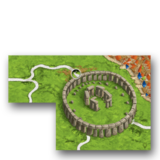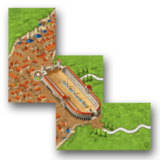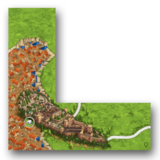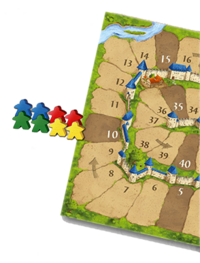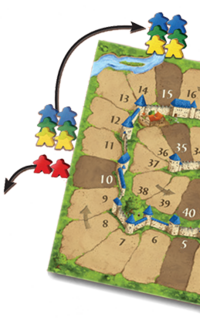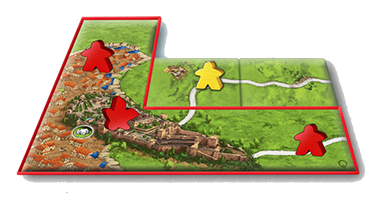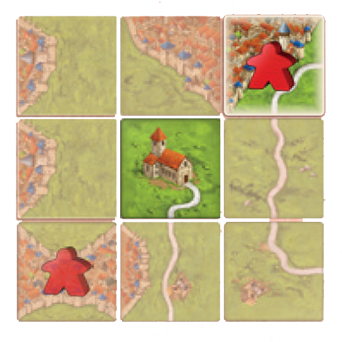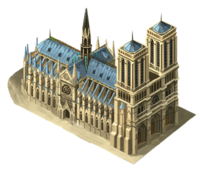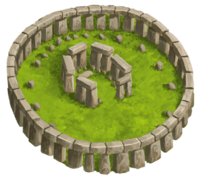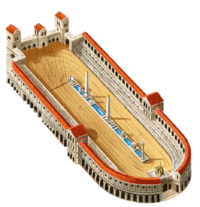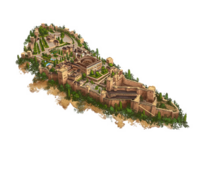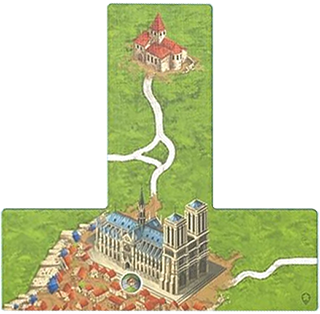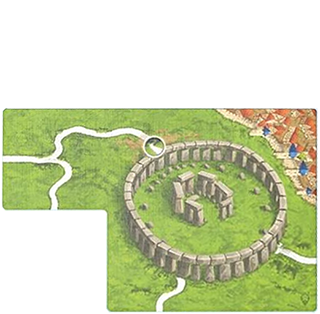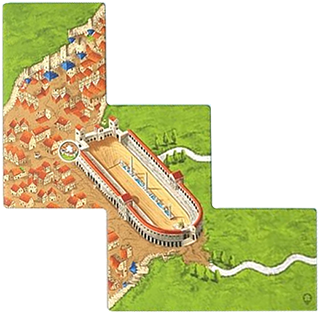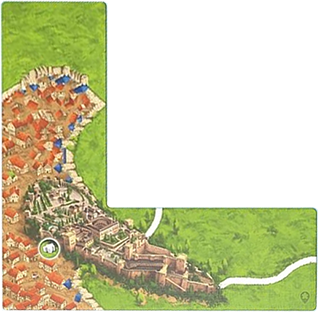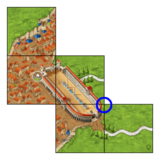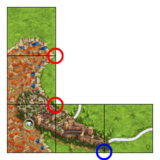Difference between revisions of "The Wonders of Humanity"
Bumsakalaka (talk | contribs) |
Meepledrone (talk | contribs) m (Updated text) |
||
| Line 33: | Line 33: | ||
<!--T:5--> | <!--T:5--> | ||
'''The Wonders of Humanity''' | '''The Wonders of Humanity''' was released by [[Hans im Glück|Hans im Glück]] in {{Year|2023}}. The expansion contains wonder tiles spanning across 5 spaces in various configurations. Each tile features a wonder built by man in different ages. The first set contains the following wonders. More sets will come: | ||
* Stonehenge, a prehistoric monument located near Amesbury in southern England (UK). | * Stonehenge, a prehistoric monument located near Amesbury in southern England (UK). | ||
* Circus Maximus, an ancient Roman chariot-racing stadium and mass entertainment venue in Rome, Italy. | * Circus Maximus, an ancient Roman chariot-racing stadium and mass entertainment venue in Rome, Italy. | ||
| Line 40: | Line 40: | ||
<!--T:14--> | <!--T:14--> | ||
<div style="display:table; text-align: center; border: 1px dotted #000000; padding: 10px; border-radius: 10px; margin: 15px;">''The wonders of humanity have reached Carcassonne. Each of them brings you individual advantages. But everyone can only use one per game. Get | <div style="display:table; text-align: center; border: 1px dotted #000000; padding: 10px; border-radius: 10px; margin: 15px;">''The wonders of humanity have reached Carcassonne. Each of them brings you individual advantages. But everyone can only use one per game. Get the wonder you want quickly to benefit from it as often as possible!''</div> | ||
<!--T:6--> | <!--T:6--> | ||
Revision as of 21:22, 2 October 2023

The Wonders of Humanity expansion contains mega tiles spanning across 5 spaces in various configurations. Each mega tile feature a wonder built by man in different ages. Each of them brings you individual advantages. But everyone can only use one per game. Get a matching wonder quickly to benefit from it as often as possible!
General info and comments
The Wonders of Humanity was released by Hans im Glück in 2023. The expansion contains wonder tiles spanning across 5 spaces in various configurations. Each tile features a wonder built by man in different ages. The first set contains the following wonders. More sets will come:
- Stonehenge, a prehistoric monument located near Amesbury in southern England (UK).
- Circus Maximus, an ancient Roman chariot-racing stadium and mass entertainment venue in Rome, Italy.
- Notre-Dame, a medieval Gothic cathedral built in Paris, France.
- Alhambra, a palace and fortress complex from the 13th century located in Granada, Spain.
This expansion has cities with clipped buildings.
Contents
- 4 wonder tiles with wonders of humanity (in the size of 5 landscape tiles)
Rules
Preparation
We recommend you to play The Wonders of Humanity with more than just the basic game tiles (about 90+). You can use any tiles you want (more basic game tiles or from the (mini) expansions, without having to play with their rules).
- To mark your wonder later, we recommend you to take another (marking) meeple in your color. You can also use something else in your color as a marker. [1]
- As always, place one meeple of each color on the scoreboard as a scoring meeple.
- Place another meeple of each color + the marking meeple next to the 10 space outside the scoreboard. Each player starts the game with 6 meeples in their supply.
- Select as many wonders as there are players and place them faceup next to the scoreboard. Put the remaining wonders aside for further games.
Placing a wonder tile
There is one wonder for each player. To receive a wonder tile, you must fulfill a condition. This falls under section 3. Scoring a feature described next:
3. Scoring a feature
The first player to get 10 or more points by scoring (landing on or crossing the 10 space on the scoreboard) performs the following steps in this order:
- 1) Take meeples and move the rest along
- Take your two meeples next to the scoreboard into your supply. Now move all remaining meeples 5 spaces forward, that is next to the 15 space.
- 2) Obtain wonder tile
- You now choose one of the selected wonders and place it in front of you. This ends your turn. You don't place it until your next turn (see 1. Placing a wonder tile).
Whoever reaches the space with the remaining meeples first (space 15, possibly later 20 and 25), takes both of their own meeples in the same way, moves the remaining meeples 5 spaces forward and chooses one of the remaining wonders.
Special cases
- If more than one player reaches the space with the meeples on the same turn, the active player chooses which of them will take their meeples (moving the others) and choose a wonder. Therefore, it is possible that another player who has also reached the space will have to wait.
- You may not move the meeples further than the 25 space, even if you are more than 4 players. The meeples will then "wait" there until the last player picks up the remaining wonder.
1. Placing a wonder tile
If there is a wonder in front of you, you do not draw a tile, but instead place your wonder according to the usual rules. Once you have placed it, you mark your wonder with your marking meeple by placing it in the center of the wonder (not in a city, on a road or in a field).
Note: If you are using normal meeple, you can place them upside down to distinguish them from the other meeple. In this way you won't confuse them with knights, travelers or farmers. [2] The marking meeple remains there until the end of the game.
2. Placing a meeple on a wonder tile
After you have placed and marked your wonder, you may immediately place up to 2 meeples on different unoccupied features (city, road, monastery or field) of this wonder tile. You may also place only one or no meeple.
3. Scoring a wonder
Each wonder has its own function that can earn you points. Some wonders give you points during the game, others at the end of the game (maybe both for future wonders). Starting with the turn in which you place and mark your wonder, you can use it to score points.
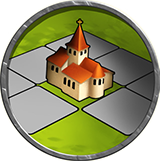 |
Notre-Dame
During the game, if you place one of your meeples on one of the 8 tiles around a monastery, you immediately score 3 points. Even if several monasteries are adjacent to the tile, you will "only" receive 3 points. [3] |
||||||||||
 |
Stonehenge
If you complete one or more roads that score points during the game, you immediately score 3 points for each of those road scorings, even if you don't have a meeple on the road yourself. [4] After that, you score the road as usual. |
||||||||||
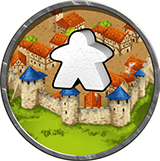 |
Circus Maximus
At the end of the game, depending on the number of players, you will receive points for each meeple of another color in (still uncompleted) cities:
| ||||||||||
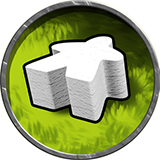 |
Alhambra
At the end of the game, you score 4 points for each of your farmers, regardless of whether they score any other points. |
||||||||||
Important!
- At the end of the game, you always score the wonders that have a score at the end of the game first, before continuing with the normal final score.
- Notre-Dame and Stonehenge, also have a longer road that is 2 "normal" tiles long. This is considered like 2 road tiles for the scoring. [5]
The wonders in detail
Tile distribution
Footnotes
For Icons explanation and licensing please visit Icons page.
- ↑
 This sentence was present in the German rules by HiG, but omitted in the English rules.
This sentence was present in the German rules by HiG, but omitted in the English rules.
- ↑
 A meeple placed on a road is called a thief in the first edition of Carcassonne (C1), a highwayman in the second edition (C2) and a traveler in the third edition (C3).
A meeple placed on a road is called a thief in the first edition of Carcassonne (C1), a highwayman in the second edition (C2) and a traveler in the third edition (C3).
- ↑
 This sentence was updated to match the wording of the German rules. The English rules seem to be mistranslated from the original:
This sentence was updated to match the wording of the German rules. The English rules seem to be mistranslated from the original:
- Even if several monasteries are located next to each other, you will "only" receive 3 points.
- ↑
 This sentence was updated to match the wording of the German rules. The English rules seem to indicate that you score the bonus points if you complete one or more roads and also score points for any completed feature during this turn:
This sentence was updated to match the wording of the German rules. The English rules seem to indicate that you score the bonus points if you complete one or more roads and also score points for any completed feature during this turn:
- If you complete one or more roads and score points during the game, you immediately score 3 points for each of those road scorings, even if you don't have a meeple on the road yourself.
- ↑
 Some wonder tiles include multiple cities spreading across multiple square spaces. Each space should be counted like a separate tile. The following images illustrate the number of road and city tiles to consider for each wonder tile:
Some wonder tiles include multiple cities spreading across multiple square spaces. Each space should be counted like a separate tile. The following images illustrate the number of road and city tiles to consider for each wonder tile:
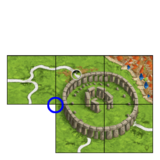
Stonehenge - One 2-tile road that forks into two open segments (top left and center)
- One 1-tile city (top right)
- Two 1-tile roads (bottom center and right)
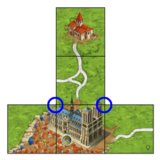
Notre-Dame - One 2-tile road with one open segment, which forks and ends at the monastery and the wonder (top and middle)
- One 2-tile city (bottom left and center)
- One 1-tile road (bottom right)


